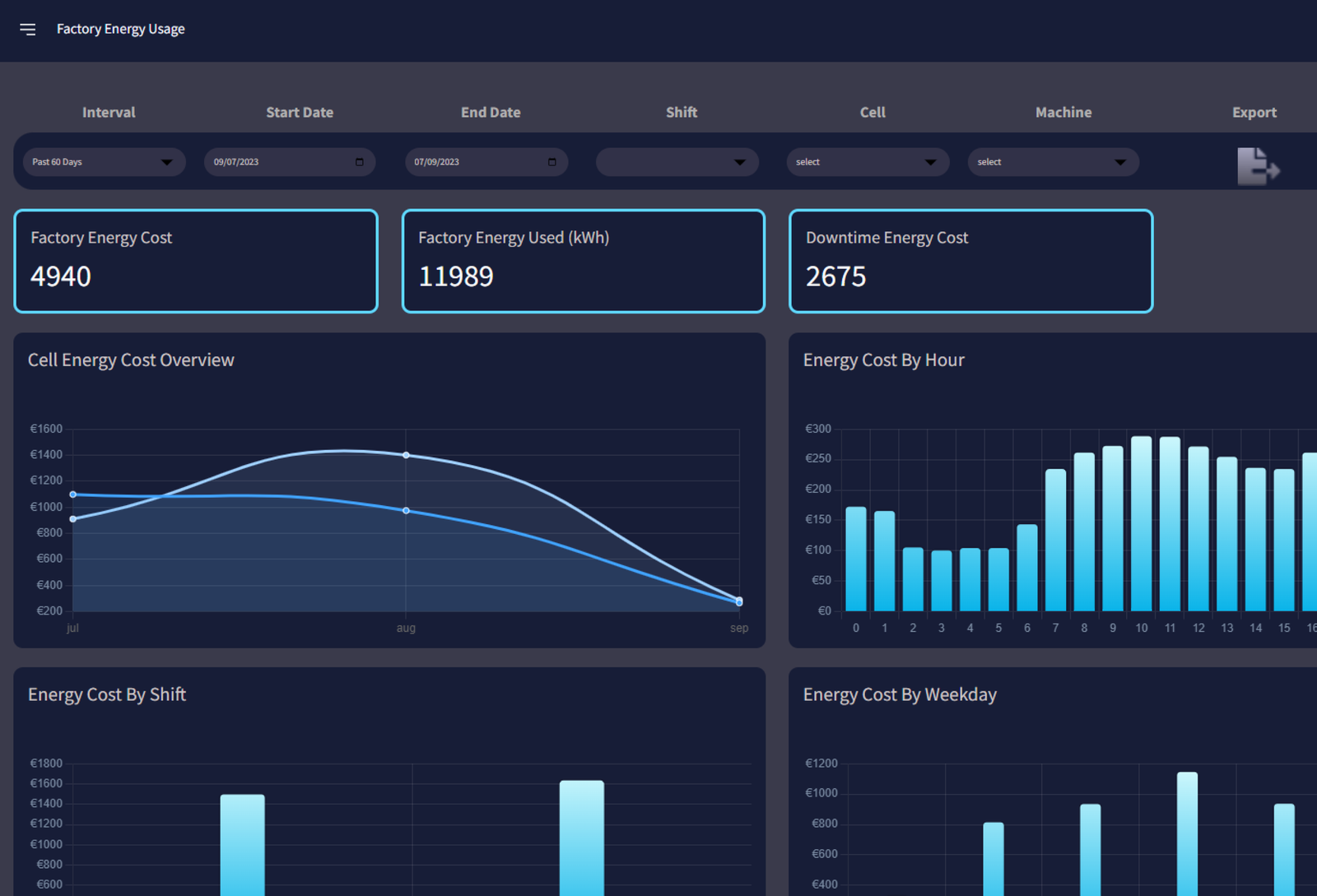

SEC in Manufacturing: Comprehensive Guide to Streamlined Energy Reporting
Table of Contents
- What is SEC in Manufacturing?
- Why is SEC Important in Manufacturing?
- How is SEC Calculated?
- How Specific Energy Consumption (SEC) Supports Carbon Emission Reporting?
- 1. Accurate Measurement of Emission Sources
- 2. Simplifies Scope 1, 2, and 3 Emission Calculations
- 3. Supports Regulatory Compliance
- 4. Improves Carbon Accounting
- 5. Drives Energy Efficiency and Emissions Reduction
- 6. Facilitates Data Quality and Benchmarking
- 7. Enhances Transparency in Reporting
- 5 Applications of SEC in Manufacturing
- 1. Energy Audits: Identifying High-Energy Consumption Areas
- 2. Process Optimisation: Improving Energy Efficiency
- 3. Benchmarking: Driving Continuous Improvement
- Role of SEC in Sustainability
- 1. Reducing Energy Waste
- 2. Lowering Carbon Emissions
- 3. Supporting Circular Economy Practices
- 4. Driving Regulatory Compliance
- 5. Enabling Benchmarking and Goal Setting
- 6. Promoting Sustainable Innovation
- 7. Strengthening ESG Performance
- Conclusion
- Frequently Asked Questions
In today’s manufacturing sector, efficiency is the name of the game—and compliance is no exception. Specific Energy Consumption (SEC) serves as a vital metric for manufacturers striving to balance regulatory demands with operational excellence.
By monitoring and improving SEC, businesses not only meet legal standards but also unlock opportunities for cost savings, energy efficiency, and sustainable growth.
Understanding and managing SEC might seem like a daunting task, but it’s a critical driver of transparency, optimised energy use, and reduced operational costs. In this blog, we’ll demystify the concept of SEC, discuss its importance in manufacturing, and provide actionable strategies to help you leverage it for long-term success.
Whether you’re new to the concept or aiming to refine your processes, this guide will help you turn SEC from a requirement into a competitive advantage
What is SEC in Manufacturing?
In the manufacturing sector, SEC often refers to Specific Energy Consumption—a critical metric used to measure the energy consumed per unit of output. This metric helps manufacturers assess energy efficiency, identify areas of energy waste, and implement measures to reduce operating costs and environmental impact.
Why is SEC Important in Manufacturing?
- Energy Efficiency: By monitoring SEC, manufacturers can determine how efficiently energy is being used in production processes, enabling them to optimise operations.
- Cost Savings: Lowering SEC directly translates to reduced energy costs, improving overall profitability.
- Sustainability Goals: Reducing energy consumption and emissions aligns with broader sustainability and carbon reduction targets.
- Regulatory Compliance: Many frameworks, such as SEC, require detailed energy and emissions data, making SEC a key performance indicator.
- Reducing Operational Costs: Energy expenses are a significant part of manufacturing costs. Lower SEC directly correlates with reduced energy bills, enabling manufacturers to achieve substantial cost savings and enhance their profitability.
How is SEC Calculated?
SEC is typically calculated using the formula:
Total Energy Consumed (kWh)/ Total Output (units or tonnes)
This formula highlights the relationship between energy input and production output, offering manufacturers a way to evaluate and optimise their energy performance. Let’s break down how SEC is applied in manufacturing and its significance.
How Specific Energy Consumption (SEC) Supports Carbon Emission Reporting?
Specific Energy Consumption (SEC) plays a crucial role in carbon emission reporting by acting as a direct link between energy usage and greenhouse gas (GHG) emissions. By accurately measuring and optimising SEC, manufacturers can not only enhance operational efficiency but also streamline their carbon reporting processes.
Integrating advanced tools, such as a carbon reporting platform like Mavarick, can further simplify and elevate the reporting process. Here’s how the SEC enhances carbon emission reporting:
1. Accurate Measurement of Emission Sources
SEC provides precise data on energy consumed per unit of production. Since energy consumption is often directly correlated with carbon emissions, SEC serves as a reliable metric for identifying and quantifying emission sources.
2. Simplifies Scope 1, 2, and 3 Emission Calculations
- Scope 1 (Direct Emissions): SEC data helps quantify emissions from on-site energy usage, such as fuel combustion in boilers or manufacturing equipment.
- Scope 2 (Indirect Emissions): By tracking electricity consumption through SEC, manufacturers can accurately calculate emissions associated with purchased electricity.
- Scope 3 (Supply Chain Emissions): SEC aids in estimating upstream and downstream emissions by linking energy usage to specific products or processes.
3. Supports Regulatory Compliance
Frameworks like SEC and the GHG Protocol require detailed reporting of energy usage and associated emissions. SEC serves as a foundational metric to provide accurate and transparent energy data for compliance.
4. Improves Carbon Accounting
By integrating SEC into carbon reporting tools and methodologies, businesses can ensure that their carbon footprint calculations are based on robust, process-level data. This enables better allocation of emissions to specific products, lines, or facilities.
5. Drives Energy Efficiency and Emissions Reduction
Measuring SEC helps identify energy-intensive processes, enabling manufacturers to implement targeted energy efficiency measures. Reduced energy consumption directly leads to lower carbon emissions, helping companies meet reduction targets and align with frameworks like the Paris Agreement and Science-Based Targets Initiative (SBTi).
6. Facilitates Data Quality and Benchmarking
SEC standardises energy and emissions data, enabling comparison across facilities, products, or industry benchmarks. This consistency enhances data quality and supports more credible reporting in frameworks like the Global Reporting Initiative (GRI) or Carbon Disclosure Project (CDP).
7. Enhances Transparency in Reporting
Using SEC ensures that carbon reporting is tied to measurable and actionable energy metrics, improving transparency. This clarity helps businesses gain trust from stakeholders, regulators, and customers.
By embedding SEC into carbon emission reporting, manufacturers can streamline their reporting processes, improve accuracy, and take meaningful steps toward reducing their carbon footprint. It not only strengthens compliance but also aligns with global sustainability and decarbonisation goals.
5 Applications of SEC in Manufacturing
Specific Energy Consumption (SEC) is a key metric in manufacturing that helps businesses monitor energy efficiency and optimise operations. Here are five practical applications of SEC in manufacturing:
1. Energy Audits: Identifying High-Energy Consumption Areas
An energy audit is the first step to understanding energy consumption patterns across various manufacturing processes. By calculating SEC for specific machinery, production lines, or facilities, manufacturers can:
- Identify energy-intensive areas that require improvement.
- Pinpoint inefficiencies, such as outdated equipment or suboptimal operating conditions.
- Quantify energy losses and prioritise solutions to reduce waste.
For example, if a particular production line shows higher SEC than others, it signals the need for targeted upgrades or maintenance to enhance efficiency.
2. Process Optimisation: Improving Energy Efficiency
Once high-SEC areas are identified, manufacturers can focus on process optimisation to reduce energy usage while maintaining or increasing output. This involves:
- Upgrading machinery to more energy-efficient models.
- Implementing automation and control systems to minimise unnecessary energy consumption.
- Adjusting operational parameters, such as load balancing, to improve efficiency.
For instance, a bottleneck in production might cause equipment to operate inefficiently, consuming more energy than necessary. Addressing such issues directly reduces SEC.
3. Benchmarking: Driving Continuous Improvement
Benchmarking involves comparing a facility’s SEC against industry standards or historical performance data. It helps manufacturers:
- Understand how their energy performance stacks up against peers in the same sector.
- Set realistic energy efficiency targets based on industry best practices.
- Monitor progress over time to ensure continuous improvement.
For example, a steel manufacturer could compare its SEC to the industry average for producing one tonne of steel, setting a goal to meet or exceed that benchmark.
Role of SEC in Sustainability
The role of Specific Energy Consumption (SEC) in sustainability is critical, as it directly links energy efficiency to environmental impact. SEC serves as a measurable indicator of how effectively energy is used in production processes, enabling businesses to optimise operations, reduce carbon emissions, and achieve sustainability goals.
Here’s how SEC contributes to sustainability:
1. Reducing Energy Waste
By measuring SEC, organisations can identify areas of high energy consumption and inefficiency within their operations. Targeted measures like upgrading machinery, process optimisation, or adopting renewable energy sources can significantly reduce energy waste, making operations more sustainable.
Example:
A manufacturer reducing its SEC by upgrading to energy-efficient equipment can achieve lower operating costs and minimise energy wastage, contributing to overall sustainability goals.
2. Lowering Carbon Emissions
Energy usage is directly linked to greenhouse gas (GHG) emissions. Lowering SEC means consuming less energy per unit of production, which in turn reduces Scope 1, 2, and sometimes Scope 3 emissions. This reduction aligns businesses with global initiatives like the Paris Agreement and supports the transition to a low-carbon economy.
Key Connection:
Improved SEC translates to reduced emissions, strengthening a company’s carbon footprint management and aligning with sustainability frameworks such as the GHG Protocol.
3. Supporting Circular Economy Practices
SEC data can guide manufacturers to adopt circular economy principles, such as minimising resource use and improving energy efficiency throughout the product lifecycle. Reducing SEC enhances resource conservation, an essential aspect of sustainability.
4. Driving Regulatory Compliance
Specific Energy Consumption (SEC) plays a crucial role in driving regulatory compliance by providing a quantifiable metric for energy efficiency in manufacturing. Regulators often require businesses to measure and report SEC as part of broader energy and environmental standards. By monitoring SEC, manufacturers can ensure they meet legal benchmarks, avoid penalties, and align with government policies aimed at reducing energy consumption and greenhouse gas emissions. Moreover, compliance with SEC-related regulations enhances transparency, fosters trust with stakeholders, and supports long-term sustainability objectives.
5. Enabling Benchmarking and Goal Setting
SEC provides a standard metric for comparing energy performance across facilities, industries, or products. Benchmarking helps companies set realistic energy reduction targets and monitor progress over time, fostering a culture of continuous improvement in sustainability.
6. Promoting Sustainable Innovation
Measuring SEC often reveals inefficiencies that drive innovation. Businesses may adopt advanced technologies, renewable energy, or automation to lower SEC. These sustainable innovations reduce environmental impact while enhancing operational resilience.
7. Strengthening ESG Performance
Improved SEC enhances a company’s Environmental, Social, and Governance (ESG) profile. It demonstrates commitment to environmental responsibility, making the company more attractive to investors, customers, and stakeholders who prioritise sustainability.
Conclusion
Specific Energy Consumption (SEC) is more than a metric for energy efficiency—it’s a cornerstone of sustainable industrial practices. By tracking and optimising SEC, businesses can reduce energy waste, minimise emissions, and align with global sustainability initiatives. As part of a broader sustainability strategy, leveraging SEC ensures long-term environmental and economic benefits, building a resilient and responsible future for industries.
Frequently Asked Questions
- What is Specific Energy Consumption (SEC)?
SEC measures how much energy is used to produce one unit of output, such as kWh per tonne. It shows how efficiently energy is being used in manufacturing.
- Why is SEC important for sustainability?
Lower SEC means less energy waste and fewer carbon emissions, helping businesses save costs and reduce their environmental impact.
- How does SEC help reduce carbon emissions?
By improving energy efficiency and using less energy per unit of production, SEC directly lowers greenhouse gas emissions.
- How can businesses reduce their SEC?
Businesses can reduce SEC by upgrading equipment, using renewable energy, optimising processes, and identifying inefficiencies through energy audits.
- Does SEC help with compliance?
Yes, SEC supports compliance with energy and carbon reporting regulations by providing accurate energy and emissions data.
Carbon Accounting System
Carbon Emissions Reporting for the Supply Chain
- Visible Supply Chain
- Quality Data You can Trust
- Auditable Reports



